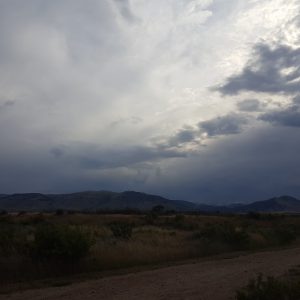This marks the end of my second month working in Carlsbad, NM and I have to say I feel like I’m in the twilight zone… Being from North Carolina, I don’t think I have ever seen so much cactus in my life and I also find it kind of surreal that there are just no trees (besides a ridiculous amount of pecan trees). I ended up joining a group of interns from the Carlsbad field office on a trip to Santa Fe this weekend and I almost cried out of joy when I saw a pine tree. Though, I will say that I am enjoying the lack of humidity in spite of how hot it can get out here.

I have started getting used to seeing cacti everywhere but that doesn’t stop me from getting excited when I see one in flower
Despite the drastic change in environment, I am thoroughly enjoying my time here. I have seen and experienced so many new things I never would have without taking this internship and moving across the country, for example the Carlsbad Caverns! They are definitely worth a trip out here if you ever get a chance. The sheer size of the caverns is humbling in my opinion.

Entrance to the caverns

There are so many different landscapes within New Mexico that it makes every trip exciting, even if you get lost! I can now honestly see why its called “The Land of Enchantment” and I am eager to continue exploring the state during my stay.

Got lost on the way to Tent Rocks and stumbled upon a hot spring! Well more like tepid spring… Photo Credit: Julie Mao

We eventually made it to Tent Rocks!

Bandelier National Monument

Petroglyphs near Santa Fe
And now, as a botanist, here are my obligatory plant photos:

Centaurium maryannum

Zephyranthes longifolia

Unidentified thistle

















